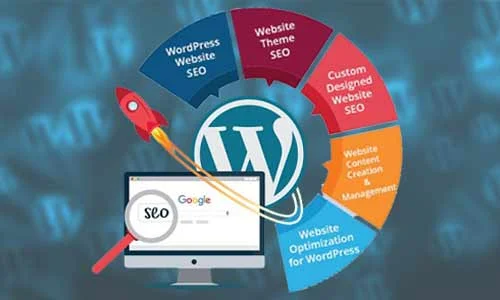Nothing is more critical to delivering quality healthcare than efficient communication. Timely communication facilitates faster diagnosis, reduces response times, and ensures a smooth workflow, ultimately leading to improved patient outcomes. One might argue that the heart of effective healthcare communication lies in the complex yet robust phone systems of hospitals.
Phone systems in hospitals don’t just allow simple exchanges of information. Instead, they revolutionize the way healthcare services are delivered, enhancing operational efficiency, improving patient care, and enabling seamless integration with other hospital technology. In the context of Australia’s healthcare scene, an efficient phone system can spell the difference between life and death.
The Anatomy of Hospital Communication
Hospital communication is a complex network that involves myriad channels, including physicians, nurses, administrative staff, pharmacists, lab technicians, patients, caregivers, and even the healthcare technology itself. These different channels can sometimes act as barriers if not effectively managed. Miscommunication or delay in communication can adversely affect patient care and the overall functioning of the hospital.
This is where phone systems play an instrumental role. A robust and efficient phone system can help hospitals to break down these communication barriers. Hospital phone systems are no ordinary devices; they are equipped with features like simultaneous calling, auto-attendants, and advanced messaging services, which ensure that critical information reaches the right person at the right time.
The Role of Phone Systems in Streamlining Patient Care
Communication is the cornerstone of effective patient care. Delays in information transfer or miscommunication could potentially aggravate a patient’s condition, leading to negative health outcomes. In contrast, timely and accurate sharing of information amongst the healthcare team contributes to swift decision-making and efficient patient care.
Numerous case studies worldwide exemplify how advanced phone systems have helped reshape healthcare. For instance, the Royal Children’s Hospital in Melbourne, Australia utilized the Cisco Unified Communications Manager, a robust phone system that brought about faster response times, improved patient safety, and enhanced the overall patient care experience.
Diving Deeper: Features of an Effective Hospital Phone System
Hospital phone systems are far from ordinary telecommunication devices. They are equipped with advanced features that are tailored to meet the needs of the dynamic healthcare environment. These include call forwarding, advanced voicemail features, automatic call distribution, and emergency notification systems. Each of these features contributes to the overall efficiency and reliability of healthcare service delivery.
For example, call forwarding ensures that a call is never missed, automatic call distribution enables swift response during emergencies, and advanced voicemail features allow easy information sharing amongst healthcare team members. The benefits conferred by these features are multifold, ranging from increased healthcare accessibility to improved patient care and satisfaction.
The Power of Integration: Phone Systems and Other Hospital Tech
Most modern phone systems are designed to integrate seamlessly with other hospital technology – a synergy that amplifies efficiency and functionality. This integration allows easy data sharing, simplifies care coordination, enhances patient safety, and the overall user experience.
When phone systems are integrated with electronic health records (EHRs), lab information systems, or imaging technology, it allows for real-time updates and sharing of patient-related data. This bolsters care coordination, as care providers can access the most recent patient data at any given point. The collective benefits of an integrated communication system are tremendous, paving the way for a truly digital and connected healthcare system.
Medical facilities worldwide have started implementing intelligent Sick Bay Systems that employ advanced technologies like AI, machine learning, and predictive analysis. These technologies provide unique benefits such as clinical decision support, personalized care plans, predictive analytics for population health, and more.
Phone Systems and Hospital Staff Efficiency
Slick communication is not only beneficial for patients but also for hospital staff. By ensuring effective communication, phone systems play a critical role in enhancing staff productivity, reducing their workload, and mitigating stress.
When a phone system is efficient, it eliminates the wasted time that comes from multiple call attempts or tracking down the right person. Streamlined communication processes related to patient care, administrative tasks, or inter-department coordination can reduce the workload and associated stress for healthcare professionals, allowing them to focus on their primary task – patient care.
Knowledge of the system’s core features and functions is essential for its smooth operation. This includes maintaining patient data, setting up appointments, managing billing, tracking treatments, and more. Furthermore, the staff must be adequately trained to prevent system misuse and reduce errors that may lead to serious healthcare consequences.
Paving the Way for the Future: Innovative Developments in Hospital Phone Systems
Phone systems in healthcare have evolved tremendously over the years, thanks to groundbreaking technological advancements. Features such as cloud-based telephony, AI-enabled automatic response systems, or integrations with wearable technology are not just adding layers of sophistication to these systems, but are also significantly enhancing their functionality.
In the coming years, these advancements promise to reshape healthcare communication radically. By leveraging cutting-edge technology, hospitals can now provide more timely, personalized, and efficient care.
Integration requires strategic planning, resource allocation, and stakeholder engagement. Mapping workflows, conducting feasibility studies, and aligning with regulatory compliance are just some of the various steps involved. Moreover, implementing a phased integration approach rather than a drastic overhaul is advised for a smoother transitioning process.
Choosing the Right Phone System: A Comprehensive Guide for Australian Hospitals
Choosing the right phone system is critical for every Australian hospital. The right system can help a hospital prioritize its operational efficiency, patient care, and data security. A thorough assessment of communication needs and existing challenges is the necessary first step.
Moreover, while selecting the phone system, hospitals should consider factors like scalability, support services, ease of integration with existing systems, and cost-effectiveness.
Conclusion
In sum, robust and efficient phone systems are critical to revolutionising healthcare communication. By enhancing operational efficiency, streamlining patient care, and integrating with other hospital technology, phone systems can catalyse positive transformations in Australia’s hospitals. As we move towards a more digital future, it’s high time that we leverage the power of technology for improved healthcare services. After all, better communication leads to better care.





